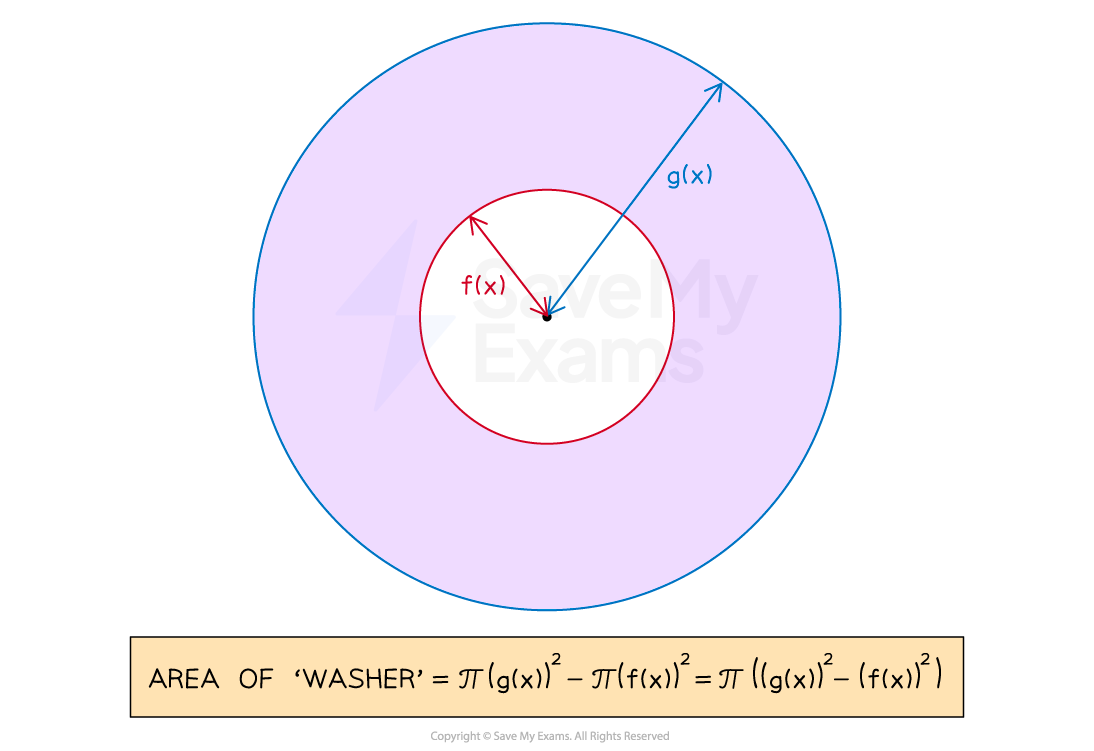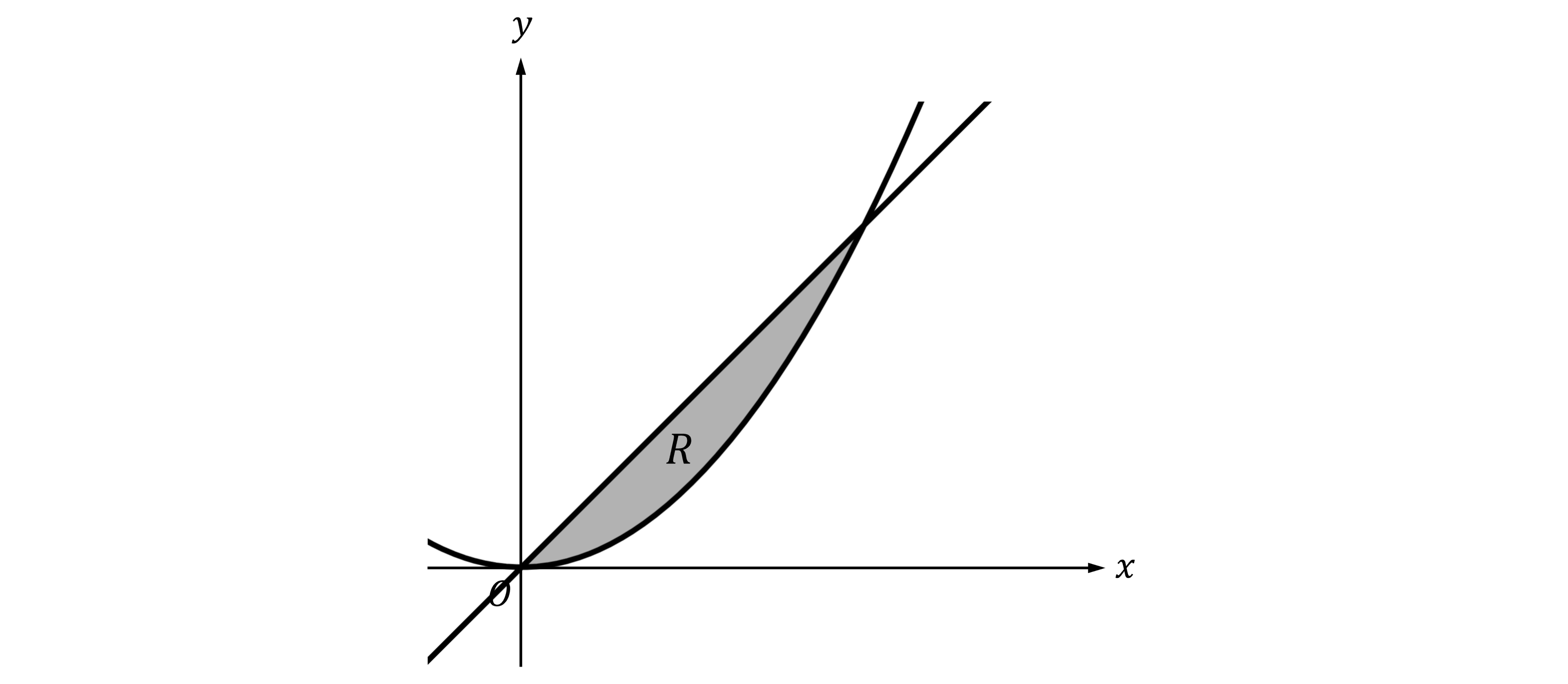Washer Method Around the x-Axis (College Board AP® Calculus AB): Study Guide
Volume with washer method revolving around the x-axis
When should I use the washer method for a volume of revolution around the x-axis?
The washer method should be used when there is a gap between a region being rotated and the line it is being rotated around
For example, in the following diagram consider rotating the shaded area between the two curves around the
-axis
There would be a gap between the
-axis and the curve

At a point
between
and
, the cross section of the solid of revolution would look like this:

I.e., it would have the shape of a washer, with
How can I use the washer method to calculate a volume of revolution around the x-axis?
Let
and
be continuous functions such that
on the interval
I.e.
is closer to the
-axis than
is on that interval
If the region bounded by
the curves
and
between
and
is rotated
radians
around the
-axis, then the volume of revolution is
Note that
and
are both functions of
Make sure that
is the curve further away from the
-axis
and
is the curve closer to the
-axis
If the curves 'swap places' over the interval
then split the calculation into separate integrals
If
and
are not stated in a question, these boundaries could involve
the
-axis (
)
and/or point(s) of intersection of the two curves
This method of finding volumes of revolution uses the idea of a definite integral as calculating an accumulation of change
It is a special case of 'finding volumes from areas of known cross-sections'
is the volume of a washer with
inner radius
outer radius
and length
is the limit of this volume element as
The integral
sums up all these infinitesimal volume elements between
and
Examiner Tips and Tricks
Be careful not to confuse with
These are not equal!
Worked Example
Let be the region enclosed by the graphs of
and
, as shown in the figure below.

Find the volume of the solid generated when is rotated about the
-axis.
Answer:
Use
is the function closest to the
-axis, so use
and
To find and
, solve
to find the
-coordinates of the points of intersection of the two curves
So and
Set up and solve the integral
The question doesn't specify units, so the units of volume will be
26.808 units3 (to 3 decimal places)

Unlock more, it's free!
Did this page help you?